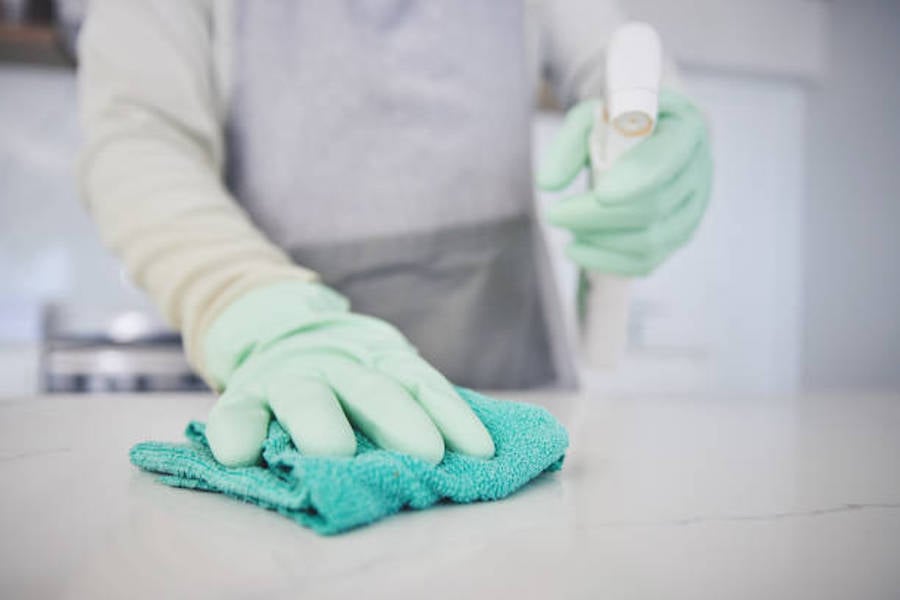The Dangers of Infections: Understanding the Importance of Disinfection and Sterilization
In today's world, where we constantly encounter harmful bacteria, viruses, and other microorganisms, it is crucial to understand The Importance of Disinfection and Sterilization in Preventing Infections. These two practices play a significant role in maintaining a safe and healthy environment, whether it's in our homes, workplaces, or healthcare facilities. By effectively eliminating or reducing the presence of harmful pathogens, disinfection and sterilization help to safeguard our well-being and protect us from various infections.
The Basics: What is Disinfection and Sterilization?
Before diving into the importance of these practices, let's first understand what disinfection and sterilization mean. Disinfection refers to the process of eliminating most, if not all, pathogenic microorganisms on surfaces or objects. It involves using chemical agents, such as disinfectants, to kill or inactivate the microorganisms. On the other hand, sterilization goes a step further and aims to completely destroy or eliminate all forms of life, including bacteria, viruses, fungi, and spores. This process is typically achieved through heat, radiation, or chemical means.
Preventing the Spread of Infections: The Role of Disinfection
Disinfection plays a crucial role in preventing the spread of infections. Many diseases and infections are transmitted through direct or indirect contact with contaminated surfaces, objects, or even person-to-person contact. By regularly disinfecting frequently touched surfaces, such as doorknobs, light switches, and countertops, we can significantly reduce the risk of transmission. Disinfection is particularly important in high-traffic areas, such as schools, hospitals, and public transportation, where the chances of coming into contact with pathogens are higher.
Protecting Healthcare Settings: The Significance of Sterilization
In healthcare settings, where patients are often vulnerable to infections, sterilization becomes even more critical. Medical instruments, equipment, and surfaces must be sterile to prevent the transmission of harmful microorganisms between patients. Surgical tools, for example, require sterilization to ensure that they are free from any potential contaminants that could cause infections during procedures. Sterilization is also crucial in dental offices, laboratories, and other healthcare facilities where invasive procedures are performed.
Reducing the Risk of Healthcare-Associated Infections
Healthcare-associated infections (HAIs) are a major concern worldwide. These infections occur as a result of receiving treatment in a healthcare facility and can lead to prolonged hospital stays, increased healthcare costs, and even mortality. Proper disinfection and sterilization protocols in healthcare settings are essential in preventing HAIs. By following rigorous cleaning and disinfection practices, healthcare providers can minimize the risk of infections and create a safer environment for both patients and staff.
Disinfection and Sterilization in the Home: Ensuring a Healthy Living Space
Our homes should be a haven of safety and well-being. Regularly disinfecting commonly touched surfaces, such as kitchen countertops, bathroom fixtures, and children's toys, can help prevent the spread of infections within our households. Sterilization techniques, such as boiling or using high-temperature settings on dishwashers and laundry machines, can also be employed to eliminate harmful microorganisms. By incorporating these practices into our daily routines, we can create a healthier living environment for ourselves and our loved ones.
The Importance of Disinfection and Sterilization in Food Safety
Foodborne illnesses are a significant public health concern worldwide. Contaminated food can harbor various pathogens, including bacteria, viruses, and parasites, that can cause severe illnesses. Proper disinfection and sterilization practices are essential in food preparation and processing industries to prevent the spread of harmful microorganisms. Strict hygiene measures, such as thorough handwashing, cleaning of utensils and equipment, and proper cooking temperatures, are crucial in ensuring food safety and reducing the risk of infections.
The Role of Disinfection and Sterilization in Public Spaces
Public spaces, such as schools, offices, and recreational areas, are often bustling with activity and can serve as breeding grounds for pathogens. Disinfection and sterilization play a significant role in maintaining cleanliness and minimizing the risk of infections in these environments. Regular cleaning and disinfecting of surfaces, ventilation systems, and shared items, such as gym equipment or computers, help create a safer and healthier space for everyone. These practices are especially important during flu seasons or disease outbreaks.
Disinfection and Sterilization in the Beauty and Personal Care Industry
The beauty and personal care industry, including salons, spas, and tattoo parlors, must prioritize disinfection and sterilization to protect both clients and service providers. Tools and equipment, such as scissors, razors, nail clippers, and needles, can easily transmit infections if not properly sterilized between uses. Disinfection of surfaces, such as treatment beds and chairs, also helps prevent the spread of infections. Following strict disinfection and sterilization protocols is crucial in maintaining a safe and hygienic environment in these establishments.
The Role of Disinfection and Sterilization in Water Treatment
Water is a vital resource that we use for various purposes, including drinking, cooking, and sanitation. Proper disinfection and sterilization of water are necessary to eliminate harmful bacteria, parasites, and viruses that can cause waterborne diseases. Municipal water treatment facilities employ disinfection methods, such as chlorination or ultraviolet (UV) radiation, to ensure the safety of the water supply. Additionally, individuals can use water filters or boil water when necessary to further protect themselves from potential infections.
Looking Ahead: Advancements in Disinfection and Sterilization
As our understanding of microorganisms continues to evolve, so does the technology and methods used in disinfection and sterilization. Scientists and researchers are constantly exploring new ways to improve these practices and develop more effective and efficient techniques. From the use of advanced disinfectants to innovative sterilization methods, such as plasma sterilization, the future holds promising advancements that will further enhance our ability to prevent infections and protect public health.

